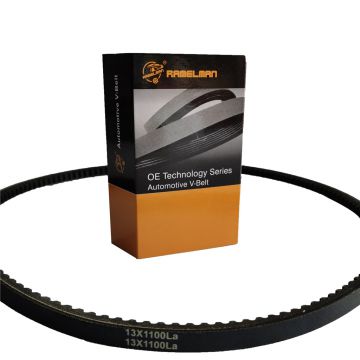by Jess Wiley | May 22, 2023 | Did You Know? | 1 comment
Boston Woven Hose and Rubber paraphernalia. (Photo: Jess Wiley) Industrial Belting Company

The Boston brand of industrial hose saw a rebirth last summer, including its famous bulldog logo. This long-lasting brand has its roots in Kendall Square, the original home of the Boston Woven Hose and Rubber Co. While the company has been bought and sold many times over the years, it would surely be satisfying to a group of men from the Cambridge area that their revolutionary ideas about hose products still have representation in the marketplace.
The current owner is Danfoss Power Solutions, with U.S. headquarters in Ames, Iowa. Danfoss is also rich in history, hailing from Denmark, and was founded in 1933 by Mads Clausen, who pioneered many solutions in thermostatic controls, among other products.
Boston and Danfoss show that hose products have progressed well beyond the fire and garden hose applications of the early years. Today, the hydraulic and industrial hose space is a multibillion-dollar industry made up of hundreds of manufacturers. Still, the industry’s origins can be traced to Colonel Theodore A. Dodge, who in 1870 bought a sewing machine from Lyman Reed Blake – already famous for developing a machine for sewing the soles of shoes to their uppers that would stitch material into the shape of a hose.
This was a vast improvement over leather hoses that were riveted together, and more promising than a fire department bucket brigade or the use of ox guts to transfer water. There were still leakage issues with this “Blake hose,” but Dodge would soon encounter James Gillespie, who had invented a loom for weaving yarn into an endless tubular shape, a revolutionary idea. He would combine the efforts of Gillespie with Robert Cowen, a machinist who worked to simplify Gillespie’s loom, and the three rented space in a soap factory in 1880 to begin making hose products.
A 1896 Boston Woven Hose ad. (Photo: History Cambridge)
By 1884, with their loom and much innovative thinking, Dodge, Gillespie, Cowen and J. Edwin Davis would formally establish Boston Woven Hose and Rubber. The company would remain intact until 1956, when it was acquired by American Biltrite. The mid-1890s would see the use of rubber bicycle tires expand dramatically, drawing in many rubber manufacturers. This would become a distraction for the company, but in the late 1890s it would refocus on innovative industrial products and consumer goods. The bulldog logo and brand name would become synonymous with top-quality rubber products that range from garden hoses to jar rubbers for canning, both used in many American homes. At the same time, the company would manufacture rubber mattings, conveyor belting and even brass nozzles for firefighting and use with their garden hoses.“Hose and Belting have accounted for roughly two-thirds of our total business,” Alden S. Foss write in 1964. These just happen to be the two products that remain a part of the marketplace today.
Danfoss Power Solutions is not the only company to lay claim to this Boston heritage. The conveyor belting products also still perform well in the market. J.M. Bierer and Thomas M. Knowland of Boston Woven Hose were awarded multiple patents that involved the rotocure process of calendering flat rubber products. This would improve the aesthetics and performance of their sheet goods dramatically and allow the company to become a leader in this field, developing belting styles that are in use today. GRT Rubber Technologies in Paragould, Arkansas. owns the intellectual property behind these conveyor belts, and markets many of them under legacy sub-brands. GRT traces its roots to 1880 and the beginning of Boston Woven Hose through its acquisition of Biltrite Ripley Operations in 2022. American Biltrite would start that operation in 1963, shortly after its acquisition of Boston Woven Hose and Rubber.
This great corporate citizen of Cambridge would bring some of the original innovation to Kendall Square and build a legacy of industrial rubber products that have lasted more than 150 years from Dodge’s original idea in 1870.
History Cambridge started in 1905 as the Cambridge Historical Society. Today we have a new name and a new mission. We engage with our city to explore how the past influences the present to shape a better future. We recognize that every person in our city knows something about Cambridge’s history, and their knowledge matters. We listen to our community and we live by the ideal that history belongs to everyone. Throughout 2023, we are focusing on the history of Cambridgeport. Make history with us at historycambridge.org.
History Cambridge is a nonprofit organization. Our activities rely on your financial support. If you value articles like this one, give today.
Jess Wiley has worked in industrial distribution for more than 30 years and is an independent researcher of business history.
Ironically, there are still folks with first hand knowledge of Woven Hose still living among us. Did you know that they employed children? My father worked there when he was definitely not legal age. Many workers died young of cancer. There was an ad placed in the Chronicle a few years back seeking plaintiffs for a class action for asbestos exposure. They also worked with PCB’s. It was an important site of Union activity, United Rubber Workers, then an affiliate of AFL-CIO. I still have my father’s Union book.

Belts Timing You must be logged in to post a comment.